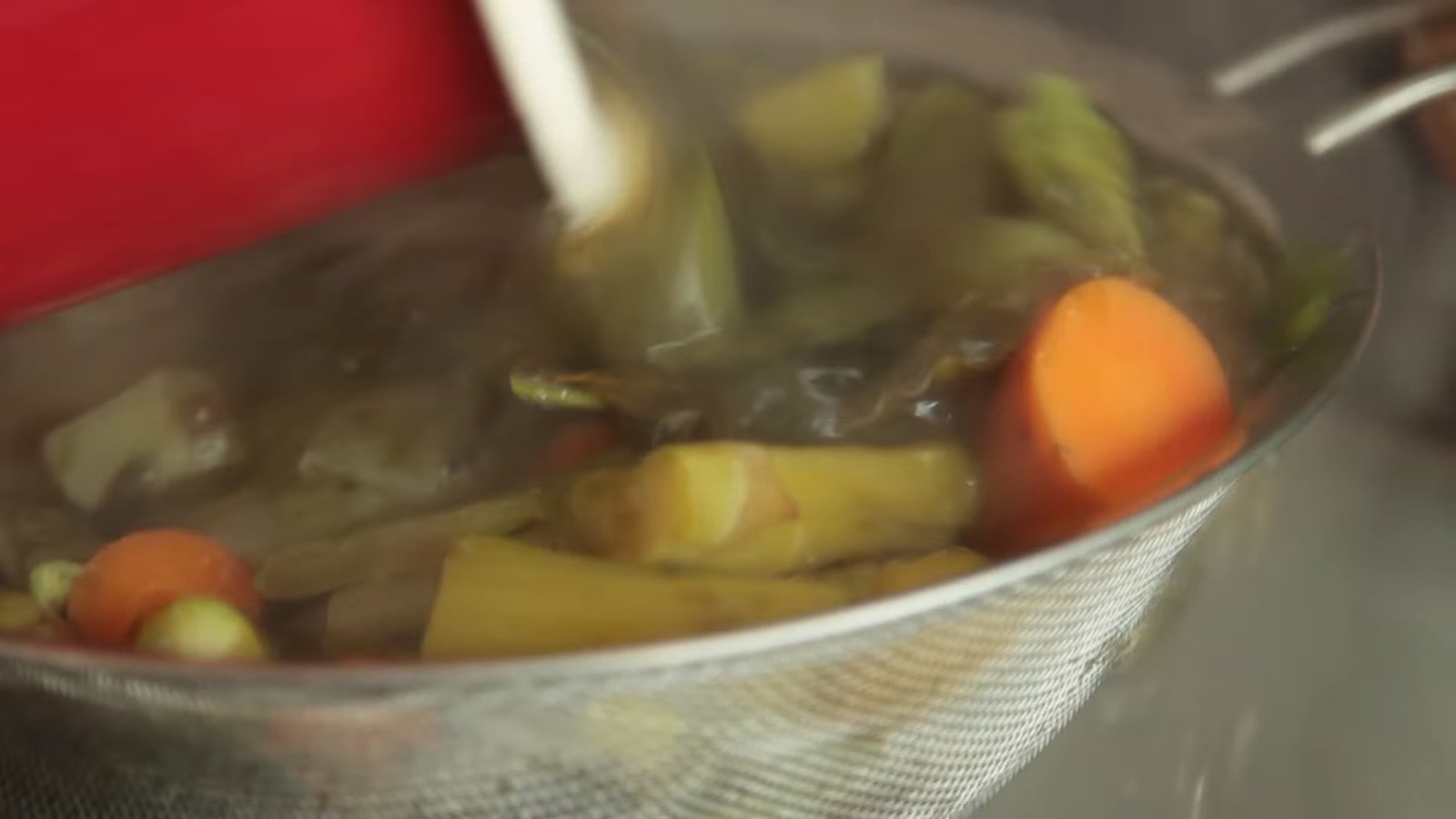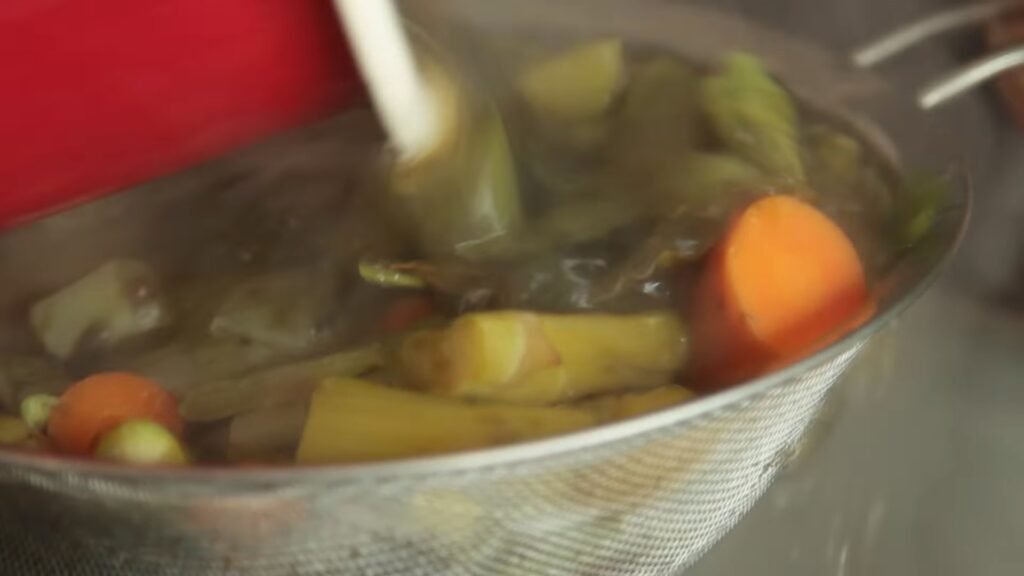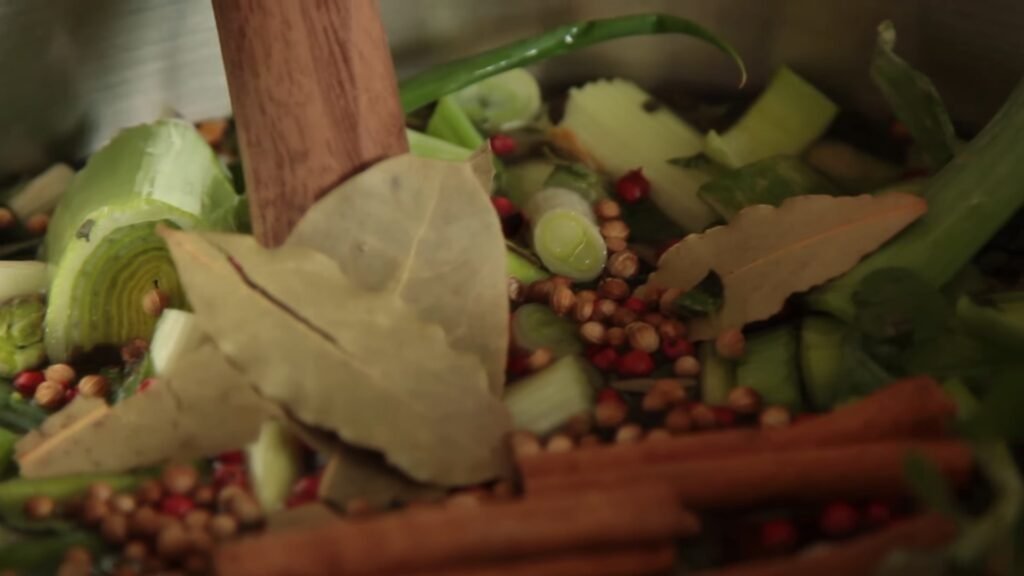Nutrition Facts
0 servings

If you’ve ever wondered how to make vegetable stock from scraps, you're not alone. Many people think veggie stock is some kind of mystical culinary secret. But in reality, it’s incredibly simple — just like making a giant cup of savory vegetable tea. And the best part? It’s an amazing way to reduce food waste and turn old, forgotten vegetables into flavorful liquid gold.
In this guide, you’ll learn how to make homemade vegetable stock using vegetable scraps, the best veggies to use (and which ones to avoid), and tips for storing your finished broth. Whether you’re vegan, vegetarian, or just looking to save money and eat clean, this recipe is for you.
Why Make Your Own Vegetable Stock?
Homemade vegetable stock is:
Budget-friendly: Uses up old or limp veggies from the fridge.
Customizable: Control the flavor, salt content, and ingredients.
Eco-conscious: Reduces food waste by repurposing trimmings and peels.
Healthier: No additives, preservatives, or palm oil like store-bought cubes.
What You’ll Need
A large pot (half-filled with water)
Vegetable scraps or leftover veggies
Mild herbs and spices like garlic, peppercorns, bay leaves, thyme, and parsley
Strainer or sieve
Optional: seaweed (like kombu or nori) for added minerals
Best Vegetables to Use in Veggie Stock
When making vegetable broth, the key is to use clean but old veggies — not moldy, just past their prime.
Great additions include:
Onion skins (for color and depth)
Carrots (even limp ones)
Celery (including leaves)
Leeks, scallions, or green onions
Garlic (whole cloves, skin on)
Parsnips or turnips

Herbs like parsley, thyme, oregano
Mushrooms or tomato ends
Seaweed for added minerals
Vegetables to Avoid in Stock
While many vegetables work well, some are best avoided due to strong flavors or undesirable effects:
Cabbage, broccoli, cauliflower, kale – overpowering, sulfurous taste
Beets – will turn your broth red or pink
Bell peppers or hot peppers – bitter or too spicy
Potatoes – can make the stock starchy and cloudy
Too many onion skins – may overly darken the broth
Strong spices like turmeric, curry powder, or ginger – too dominant
Stick to root vegetables and mild herbs for a clean, balanced flavor.
How to Make Vegetable Stock – Step-by-Step
Fill your pot halfway with water and place on high heat.
Roughly chop your veggies (no need to peel if clean). Add them to the pot.
Toss in a few herbs and spices: garlic, peppercorns, bay leaves, and your choice of parsley, thyme, or coriander seeds.
Optionally, add a strip of nori or kombu for nutrition.
Bring to a gentle boil, then reduce to a simmer.
Let it simmer for 1 to 3 hours. The longer it simmers, the richer the flavor.
Once done, strain your stock through a sieve or cheesecloth, pressing down on the solids to release all the liquid.
Cool the stock to room temperature.
Storage Tips
Fridge: Store in a sealed container for up to 5 days.
Freezer: Pour into jars, freezer bags, or ice cube trays for longer storage.
You can even reduce it further to make a flavorful stock concentrate.
How to Use Vegetable Stock
Homemade veggie stock is incredibly versatile. Use it in:
Soups and stews
Risottos and rice dishes
Braising vegetables
Sauces and gravies
As a savory base for plant-based meals
You can also enjoy it on its own as a light, nourishing broth.
Final Thoughts
Making your own vegetable stock is one of the easiest and most rewarding kitchen skills you can learn. It saves money, reduces waste, and gives you full control over your ingredients. Once you start, you’ll never want to buy store-bought stock again.

So next time you clean out your fridge, don’t toss those limp carrots or celery ends. Toss them in a pot, simmer them low and slow, and enjoy the magic of homemade vegetable broth.

If you’ve ever wondered how to make vegetable stock from scraps, you're not alone. Many people think veggie stock is some kind of mystical culinary secret. But in reality, it’s incredibly simple — just like making a giant cup of savory vegetable tea. And the best part? It’s an amazing way to reduce food waste and turn old, forgotten vegetables into flavorful liquid gold.
In this guide, you’ll learn how to make homemade vegetable stock using vegetable scraps, the best veggies to use (and which ones to avoid), and tips for storing your finished broth. Whether you’re vegan, vegetarian, or just looking to save money and eat clean, this recipe is for you.
Why Make Your Own Vegetable Stock?
Homemade vegetable stock is:
Budget-friendly: Uses up old or limp veggies from the fridge.
Customizable: Control the flavor, salt content, and ingredients.
Eco-conscious: Reduces food waste by repurposing trimmings and peels.
Healthier: No additives, preservatives, or palm oil like store-bought cubes.
What You’ll Need
A large pot (half-filled with water)
Vegetable scraps or leftover veggies
Mild herbs and spices like garlic, peppercorns, bay leaves, thyme, and parsley
Strainer or sieve
Optional: seaweed (like kombu or nori) for added minerals
Best Vegetables to Use in Veggie Stock
When making vegetable broth, the key is to use clean but old veggies — not moldy, just past their prime.
Great additions include:
Onion skins (for color and depth)
Carrots (even limp ones)
Celery (including leaves)
Leeks, scallions, or green onions
Garlic (whole cloves, skin on)
Parsnips or turnips

Herbs like parsley, thyme, oregano
Mushrooms or tomato ends
Seaweed for added minerals
Vegetables to Avoid in Stock
While many vegetables work well, some are best avoided due to strong flavors or undesirable effects:
Cabbage, broccoli, cauliflower, kale – overpowering, sulfurous taste
Beets – will turn your broth red or pink
Bell peppers or hot peppers – bitter or too spicy
Potatoes – can make the stock starchy and cloudy
Too many onion skins – may overly darken the broth
Strong spices like turmeric, curry powder, or ginger – too dominant
Stick to root vegetables and mild herbs for a clean, balanced flavor.
How to Make Vegetable Stock – Step-by-Step
Fill your pot halfway with water and place on high heat.
Roughly chop your veggies (no need to peel if clean). Add them to the pot.
Toss in a few herbs and spices: garlic, peppercorns, bay leaves, and your choice of parsley, thyme, or coriander seeds.
Optionally, add a strip of nori or kombu for nutrition.
Bring to a gentle boil, then reduce to a simmer.
Let it simmer for 1 to 3 hours. The longer it simmers, the richer the flavor.
Once done, strain your stock through a sieve or cheesecloth, pressing down on the solids to release all the liquid.
Cool the stock to room temperature.
Storage Tips
Fridge: Store in a sealed container for up to 5 days.
Freezer: Pour into jars, freezer bags, or ice cube trays for longer storage.
You can even reduce it further to make a flavorful stock concentrate.
How to Use Vegetable Stock
Homemade veggie stock is incredibly versatile. Use it in:
Soups and stews
Risottos and rice dishes
Braising vegetables
Sauces and gravies
As a savory base for plant-based meals
You can also enjoy it on its own as a light, nourishing broth.
Final Thoughts
Making your own vegetable stock is one of the easiest and most rewarding kitchen skills you can learn. It saves money, reduces waste, and gives you full control over your ingredients. Once you start, you’ll never want to buy store-bought stock again.

So next time you clean out your fridge, don’t toss those limp carrots or celery ends. Toss them in a pot, simmer them low and slow, and enjoy the magic of homemade vegetable broth.
